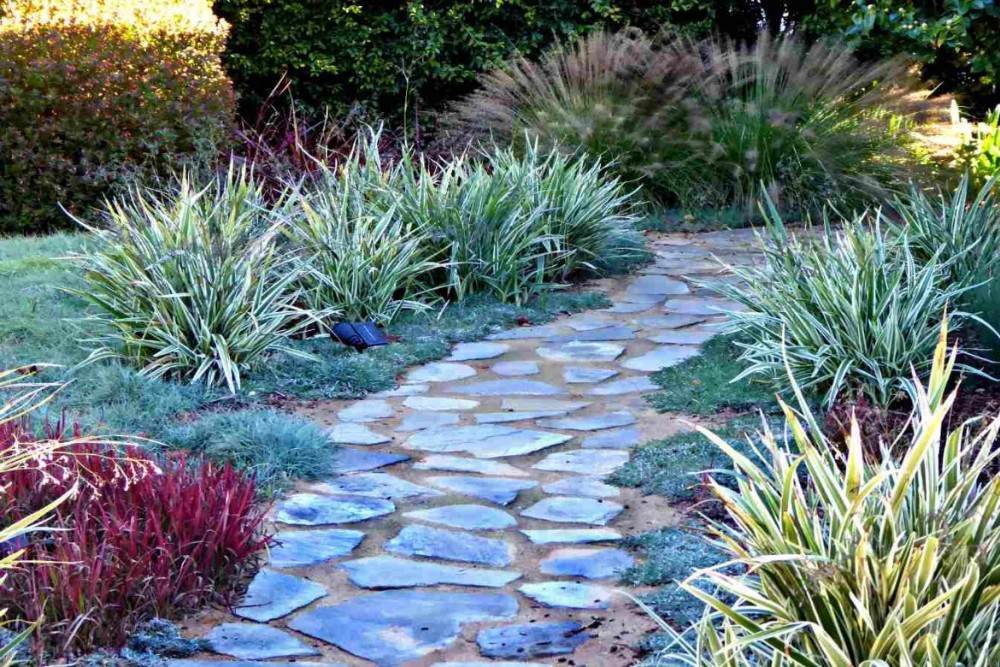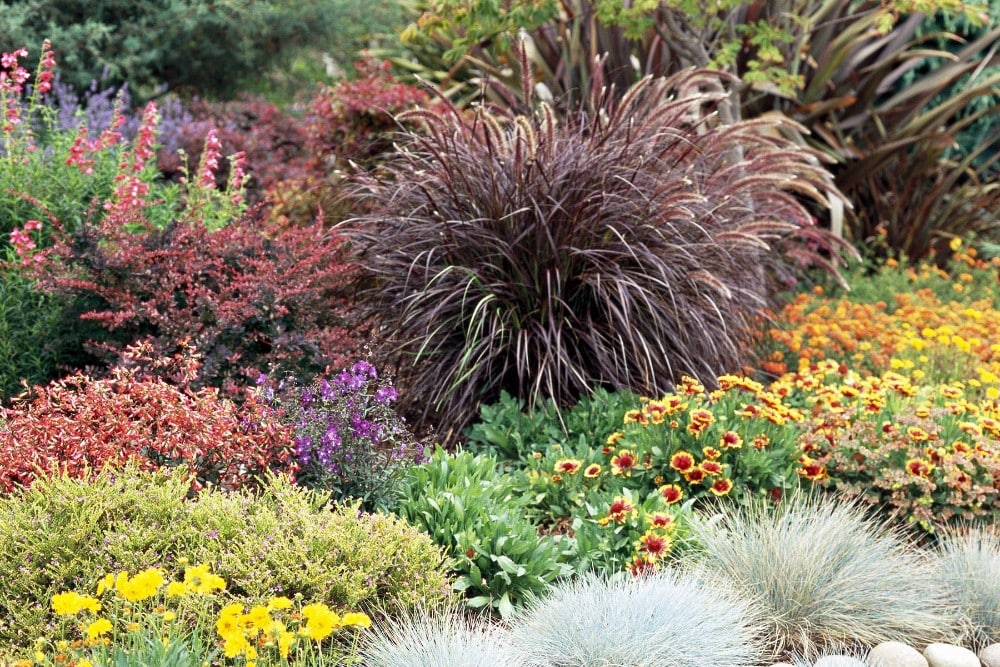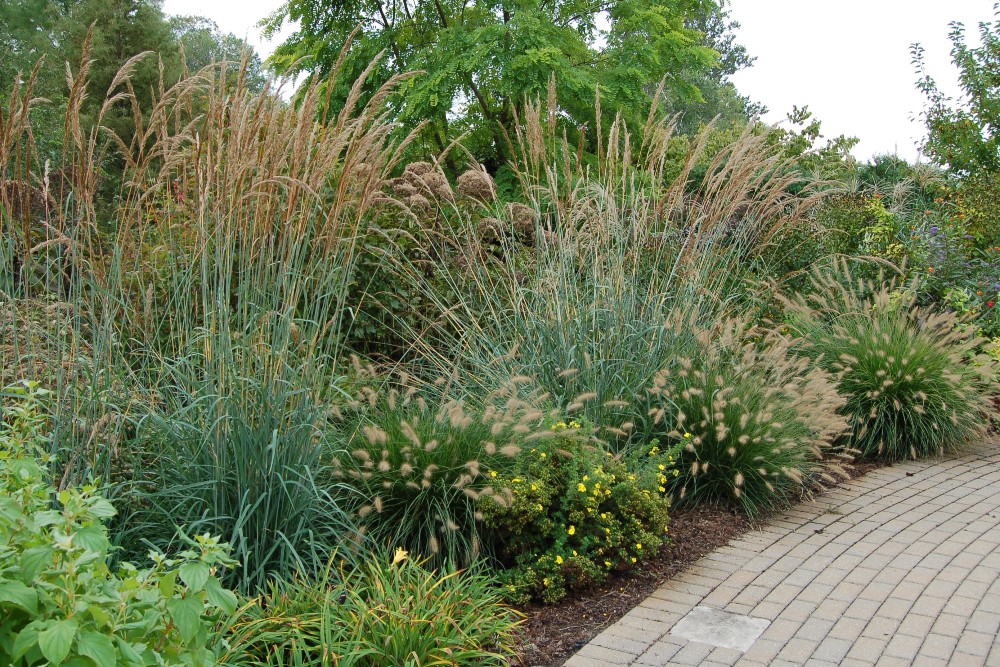For nearly nonstop performance, strength, and visual impact, few plants compare to ornament grass. Unlike lawn or turfgrass varieties, ornamental grasses are meant to grow—not be cut or mown—and most are not used as ground covers. Once you start landscaping with ornamental grasses you will be amazed by how many varieties, sizes, shapes, and colors are available. You can also use an ornamental grass in a container garden, as part of the thriller, filler, spiller, theory. If you are considering adding one or more variety to your landscape the following are some great tips on how to make sure they continue to thrive.
How to Grow Ornamental Grasses
Ornamental Grass is a no-fuss addition to any perennial garden. Ornamental grasses have become all the rage in landscaping circles. They are tough, drought-tolerant plants that add a visual appeal from summer through winter with their attractive leaves and flower heads. Select a grass that’s hardy for your area with the growth habits (bunching or spreading) that you prefer. Ask a landscaper for types of grasses that will best work in your yard.
When To Plant Ornamental Grasses
There’s no quicker way to liven up your garden than to drop in a few ornamental grasses and stand back. It’s the gardening equivalent of an exclamation point! You can choose annual grasses or perennial grasses. Annual grasses would be planted in the spring and will only last through one growing season. Perennial grasses can be planted in spring or fall and will continue to come back year after year.
Where to Plant Ornamental Grasses
Most ornamental grasses grow best in full sun, but a few varieties can tolerate (or even like) a bit of shade. So your main consideration for location is the availability of sunlight and water in accordance with the needs of the type of grass you are planting. Your professional landscaper can help you decide what type of grass you should purchase and whether the grass will like well-drained, moderately fertile soil, or a soil that is richer. A landscaper can also tell you which grasses like the sun and which like the shade.
Ornamental Grass Growing Tips
Begin by planting your grasses at the same depth as they were in the pot to avoid water pooling…
- Cut back Ornamental Grasses in the spring before new growth shows. Large clumps will need dividing about every 3 years.
- Varieties with fine flowers and/or seed heads should have plain backgrounds to show off their blooms.
- Specimen plants should be given plenty of room to grow, to eliminate clutter or visual competition.
- You will find grasses with interesting textures to be best displayed in groups.
- Some seed heads move or rustle in a light breeze. Plan carefully for sound and movement.
Fertilizing Ornamental Grasses
Most ornamental grasses do not need to be fertilized. Container plants need occasional feeding because they are in a closed environment, but in-ground plants usually do better without extra nitrogen, which can make leaves floppy and cause excess growth and limp plants.
Watering Ornamental Grasses
In the initial year of your ornamental grass plants should be watered well in order to promote a solid root system. Except for the water-loving varieties, most ornamental grasses won’t need extra water once they’ve become established. Water every other day after planting, gradually extending the time between watering. After 2 or 3 weeks, watering twice a week should be plenty.
Weed Control
Control of growth of weeds around your grasses with a layer of mulch can also help to prevent unwanted reseeding.
Tips For Choosing the Right Ornamental Grasses
Every garden can be enhanced by an ornamental grass. Large or small, a well-chosen grass brings rich texture, contrast, and movement to an outdoor space. The grasses can provide those same elements throughout all of the four seasons. The following tips may help you choose the best for your property…
- Choose grasses that are suitable for the soil conditions of your property
- If you want privacy, then plant tall ornamental grasses
- Decide on warm-season grasses or cool-season grasses. Warm-season grasses grow later in spring until 1st frost, Cool-season grasses tend to grow from late winter to early summer.
- If you have a small garden, it is vital that you carefully research the grass you wish to grow and assume that the tall end of its height range is the eventual height you will end up within your landscape.
Contact us (859-640-0657) for a free consultation!
—
 About Presentable Landscaping
About Presentable Landscaping
Presentable Landscaping provides many landscaping services to our customers in Northern Kentucky and Greater Cincinnati.
- Clean ups
- Pruning / Trimming
- Paver Patios
- Mulching
- Retaining Walls
- Drainage
- Leaf Removal
- Gutter Cleaning




 About Presentable Landscaping
About Presentable Landscaping